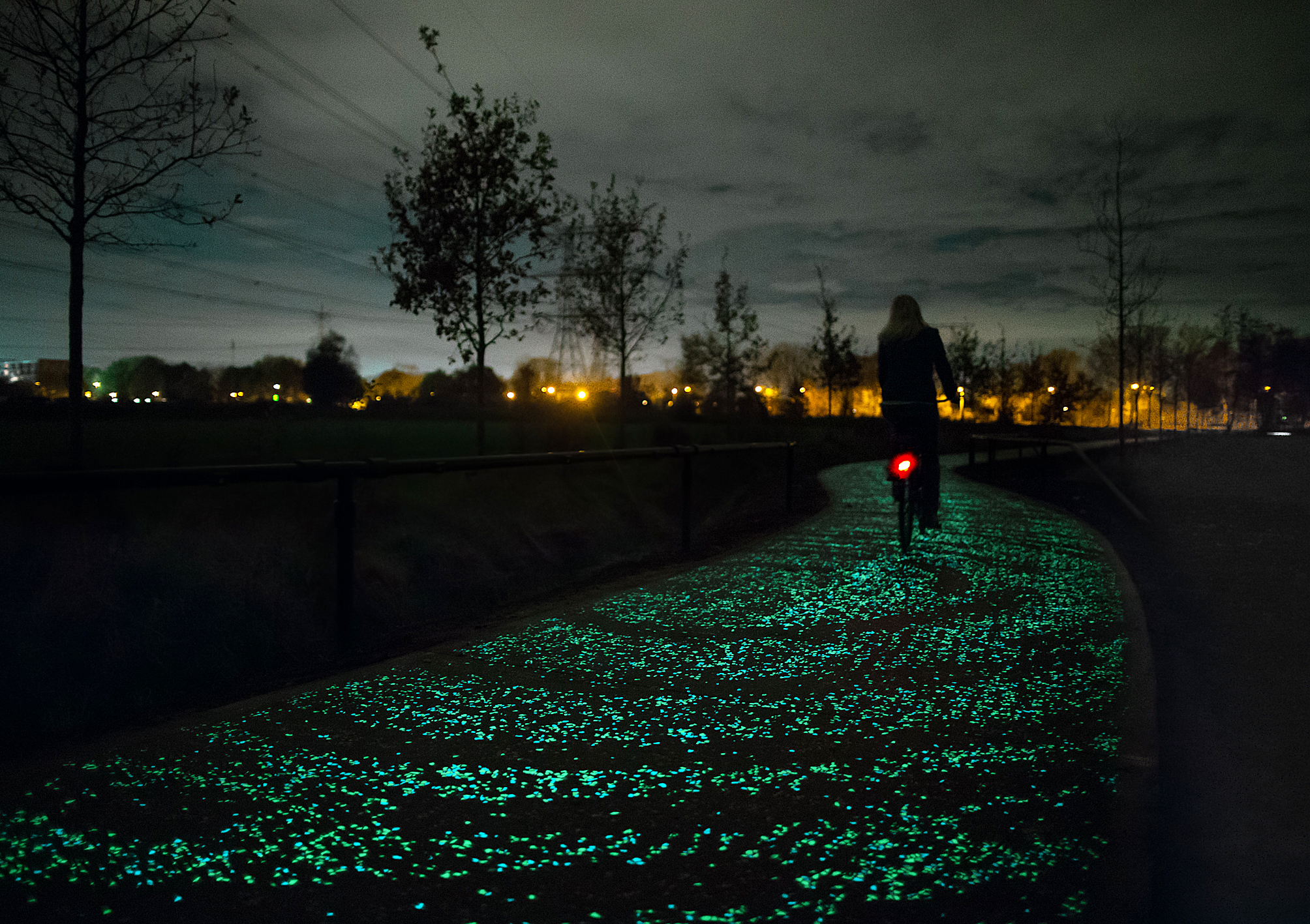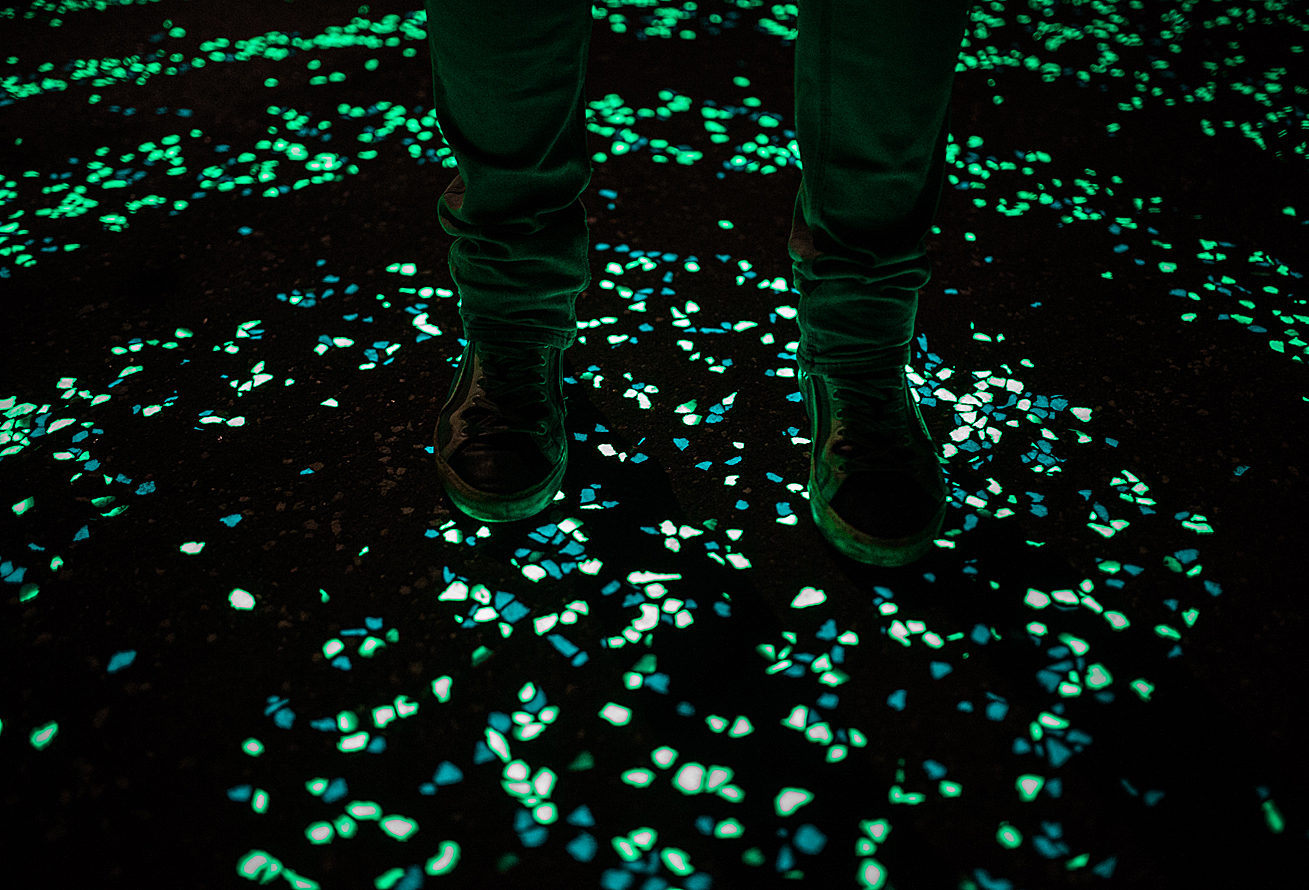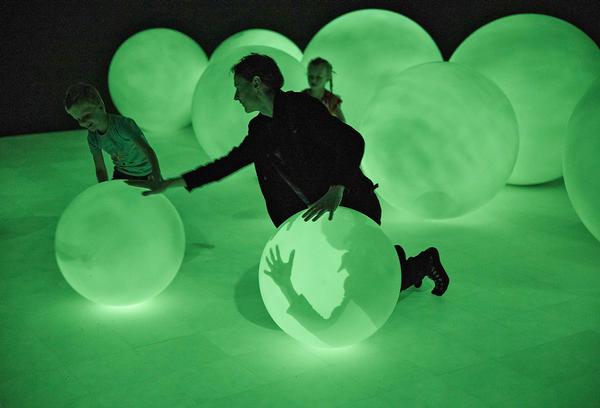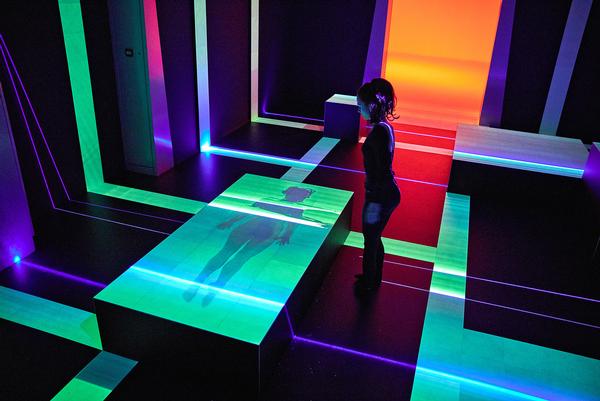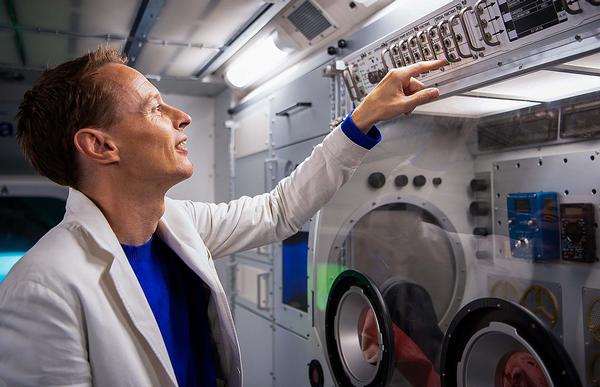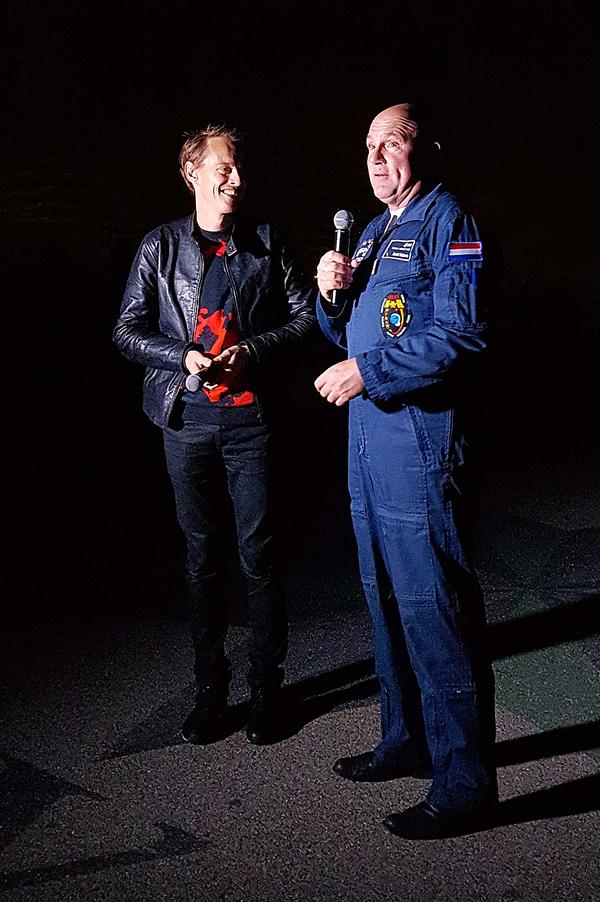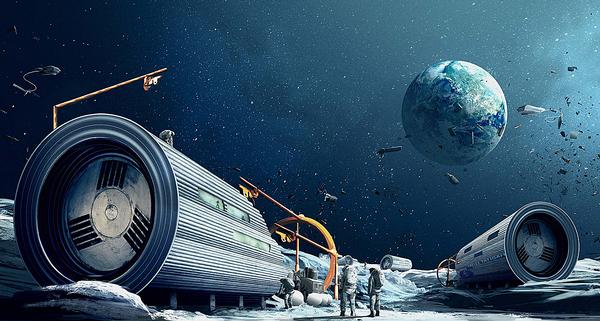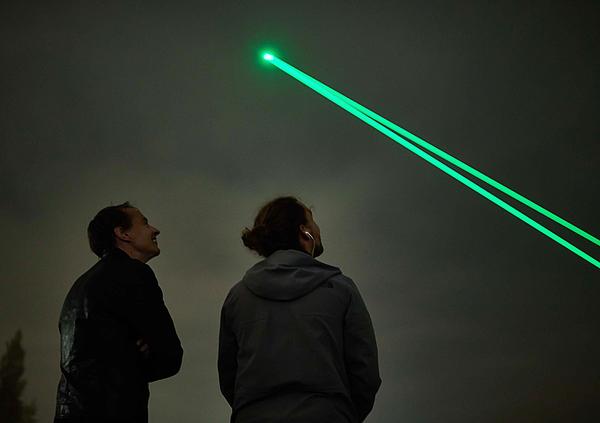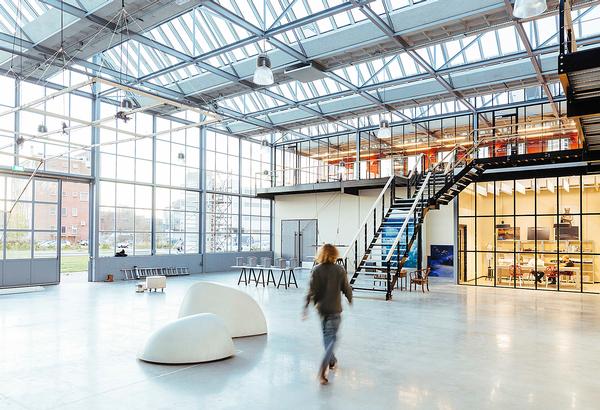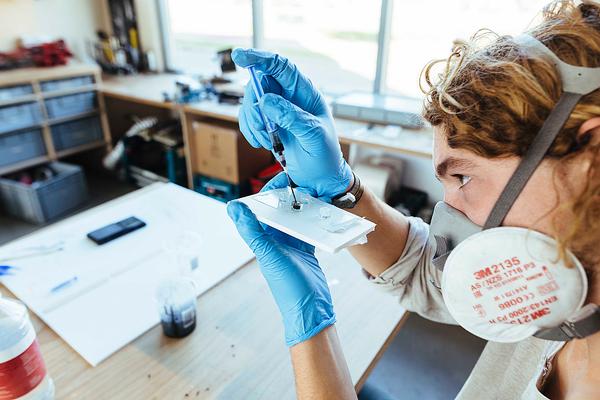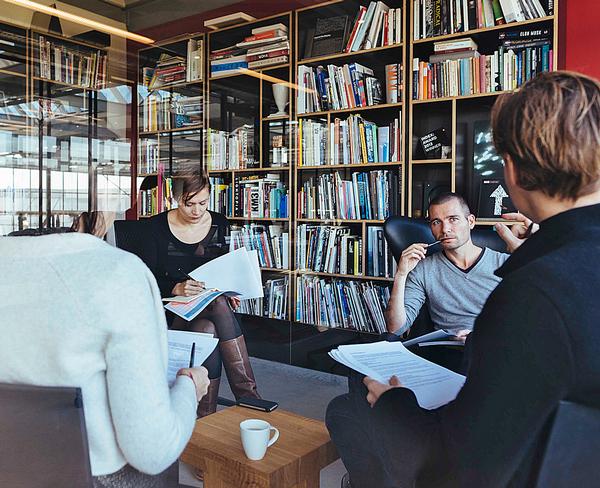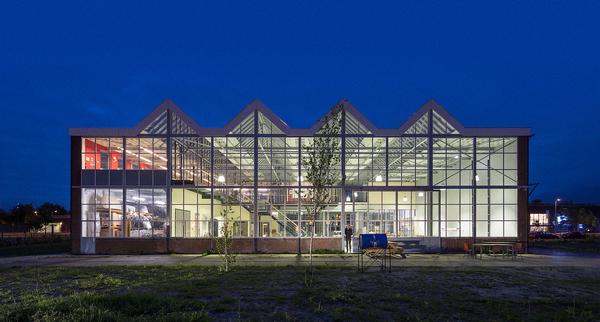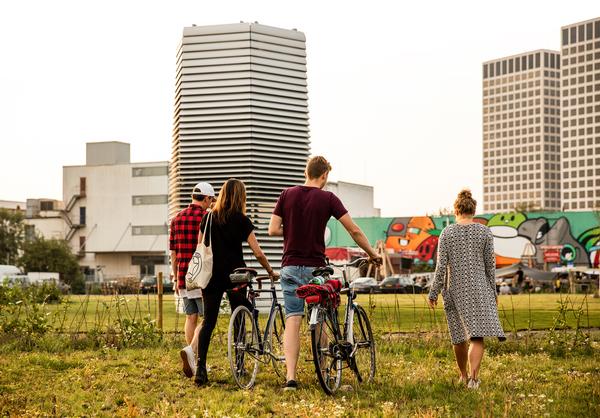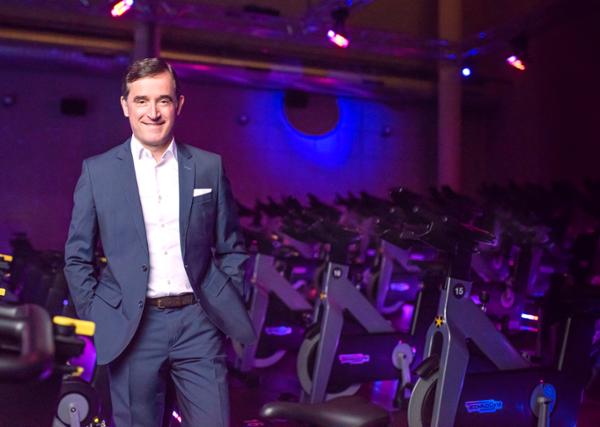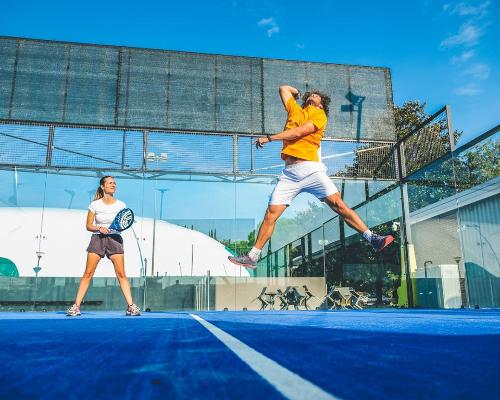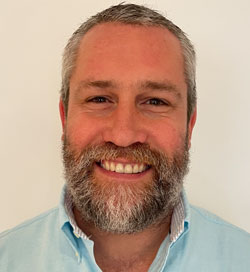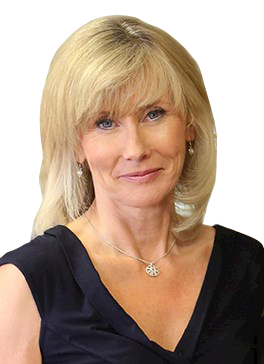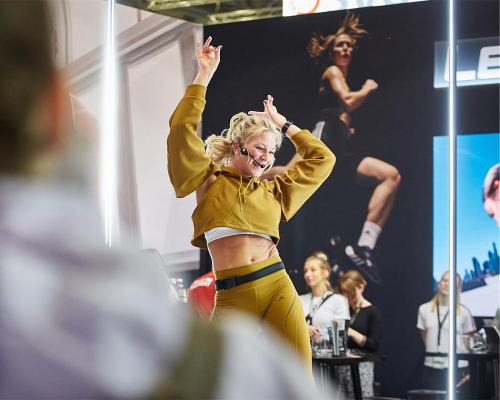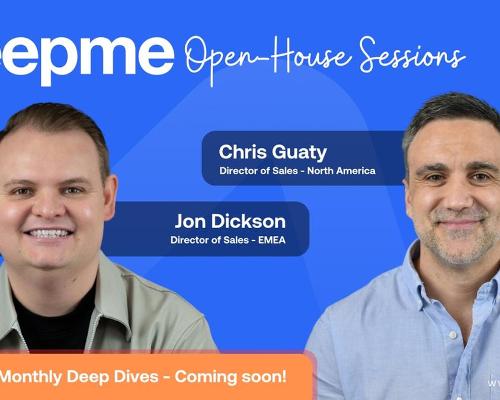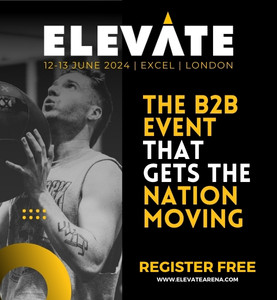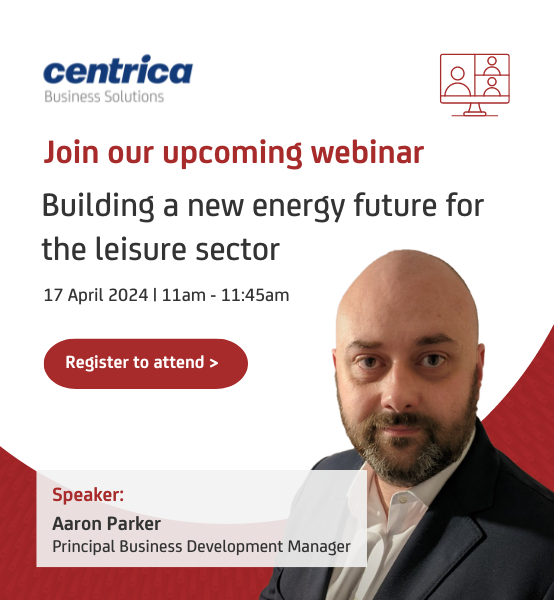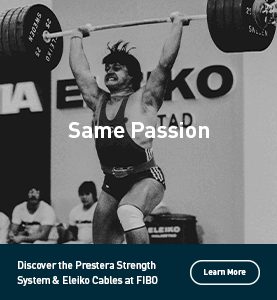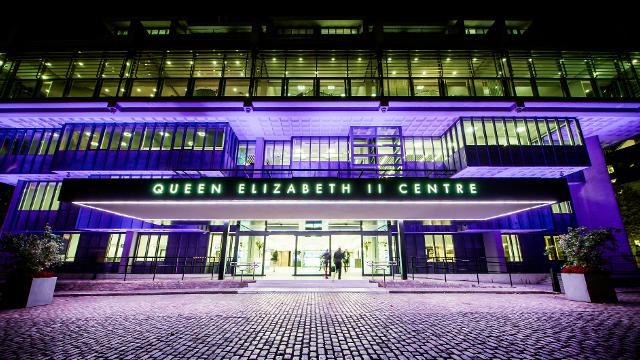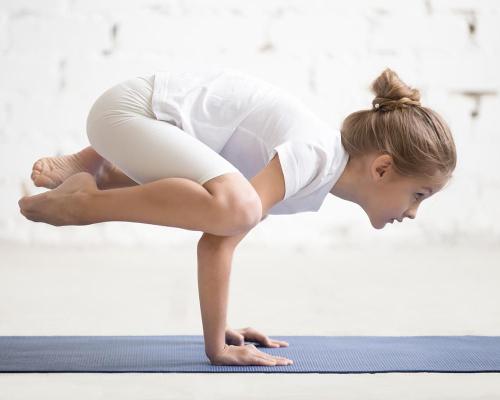features
Profile: Daan Roosegaarde
The Dutch designer on the importance of human connection, the challenge of upcycling space junk and why design must make the world a more sustainable and beautiful place
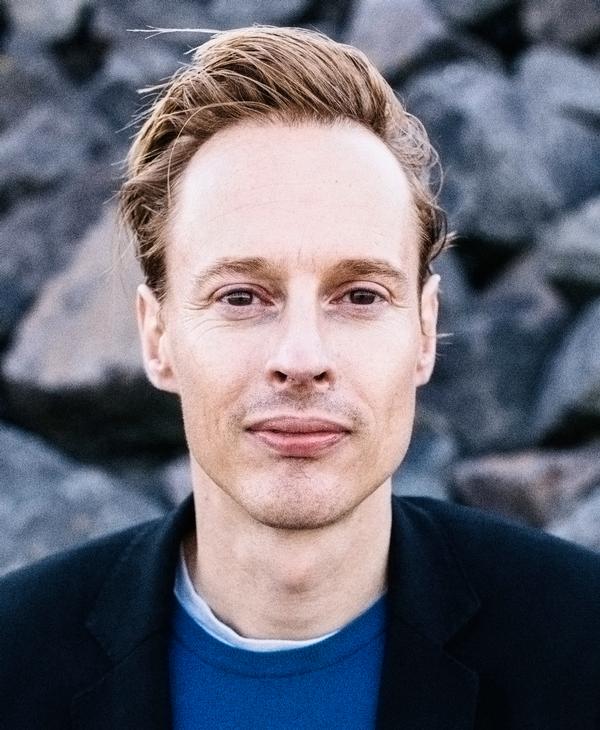
There is a big, big problem in this world,” sighs Daan Roosegaarde, solemnly. “And it’s not a lack of money, or a lack of technology.” A pause. “It’s a lack of imagination!”
You certainly could not accuse the ebullient Dutch designer of lacking this particular quality. He has made it his mission to transform the world into a more sustainable and liveable place – with a series of ideas that are bold, brilliant and just a little bit bonkers.
From a nightclub dance floor that generates electricity through the act of dancing, to a smog-consuming bicycle, to a huge outdoor air purifier which turns toxic waste into jewellery, Roosegaarde and his Rotterdam-based team of engineers and designers work at many scales and in many locations. What unites the projects, he says, is a sense of ‘schoonheid’.
“It’s this Dutch word, which is almost unpronounceable and doesn’t really translate into English,” he explains. “It has two meanings. One is a type of beauty that comes from inspirational creativity. It can trigger people to engage with the world around us. The other meaning is ‘clean’ – clean water, clean air, clean energy and clean technology.
“These are the values of our future society, so when we design something it should have these things in its DNA. Otherwise it’s just short-term thinking.”
Roosegaarde’s projects can appear mystical and otherworldly, more science-fiction than real world. Take, for example, Waterlicht – a touring light display that creates an ethereal virtual flood to digitally demonstrate the prospective impact of rising sea levels. Or Gates of Light, which uses retro reflection from car headlights to illuminate 60 buildings along a highway. To Roosegaarde, though, his ideas are rooted in reality, designed to be “practical and pragmatic, in a very Dutch way.”
“I want to demonstrate that creativity is our true human capital, because we need to find a new harmony between economic progress and humanity,” he argues. “The way we’re doing things now is not sustainable. Instead of embracing the future, we’re too busy being scared of it. We’re scared of robots, we’re scared of China. The question I ask myself is, ‘How do we change that?’”
The answer, he believes, is engagement.
“The fact that the problems the world faces are so big and so disconnected from who we are is part of the problem. Who cares about a polar bear in Antarctica, or loads of plastic waste they’ve never seen? These days, we’re becoming more isolated. Maybe I have 5,000 Facebook friends, but I’m at the airport drinking my cocktail alone. It’s a depressing thought. My job is to create connections, to bring people together and make them care.”
This mission is the inspiration behind ‘Presence’, the first museum exhibition of Roosegaarde’s career.
Creating Presence
Designed for the Groninger Museum in the Dutch city of Groningen, ‘Presence’ is an 800sq m installation that builds on the studio’s fascination with innovative material and technical research. Different galleries allow visitors to experience various changes in perspective. One room seems filled with luminous stardust, calling to mind a vast city seen from an aeroplane. Other spaces appear to scan visitors by recording their presence in silhouettes and patterns.
“What you find is one big light-emitting landscape that shows the impact you have on the world around you,” says Roosegaarde. “The room scans you, and shows your imprint as you move along it in a way that becomes more organic and playful. There are no ‘do not touch’ signs, because they isolate from reality.
“The project scared the shit out of me when we first started, and I was afraid it was too abstract, but people have immediately engaged with it in a beautiful way. There’s no hierarchy. From CEOs and ministers to students, the moment they’re inside, everyone interacts, explains and shares together. And they’re more weird, obsessive and crazy than I could ever imagine, which is great!
“Two weeks into the show, some people found out that if you use the light of your phone as a flashlight, it triggers a response. Soon others started following. People learn from each other, and how they are using the space keeps evolving. Art is a unifier and a really powerful way of creating a collective experience where people are not scared of the future but curious.”
The exhibition, which runs until January 2020, has been a hit. At the same time, Phaidon has released a book about Roosegaarde, his work has featured widely online and in the architectural press, and his well-received 2017 TED Talk has continued to pick up views (over one million and counting). Now, it seems, is his moment. You might expect him to consolidate this by just doing more of the same: another version of the smog-eating tower series, perhaps. Instead, though, his current focus is on the most ambitious project of his career. Not content with cleaning up our planet, he is turning his attention to our solar system.
The Space Waste Lab
The idea was born in his studio. “I was walking round one day when I saw this image on the desktop of one of my designers,” he recalls. “It was a huge black image with little white dots and a big central dot in the middle. I was curious.
“He told me it showed the earth surrounded by space junk. I said: ‘Holy shit I’ve never seen that before in my life!’ It had an obscene beauty for me. On one hand it looks like a Jackson Pollock. On the other, it represents this crazy attitude where somehow we’re not satisfied with just polluting planet Earth, we’re now also dumping old satellites and rockets and missiles outside our atmosphere and nobody knows how to clean it. That was the beginning of the Space Waste Lab.”
Over the years to come, Roosegaarde will be working alongside the European Space Agency (ESA) to draw attention to the problem, and to capture and upcycle space waste into sustainable products. Students, politicians and business and tech leaders are on board.
“We became obsessed with the question of what we can do with 1.8 million kilos of harvested space junk,” says Roosegaarde. “Can we turn it all into a giant solar reflector to mitigate climate change? Can we use it to 3D print houses on the moon? Can we engineer a controlled re-entry to bring it back to earth so it burns up in the atmosphere without polluting?
“Well apparently, with that last idea, yes we can! And the result looks like fireworks! We can create beauty out of junk. It’s not waste, it’s a shooting star!”
The idea has quickly gained traction, and ESA engineers are developing the idea. A potential demonstration has been earmarked for the 2020 World Expo in Dubai.
Developing an idea
At their best, Roosegaarde’s projects appear effortlessly simple; neat but spectacular solutions to big issues that can inspire the public, but are also taken seriously by scientists, academics and engineers. But, exclaims Rossegaarde, “a project only looks easy after millions of mini decisions.
“Every idea starts with about 80 per cent bullshit to 20 per cent beauty, and that’s on a good day! I have learnt to recognise the seed of a good idea though. In the way that Michelangelo looked at a piece of marble and saw what it could become, it is our job to look at things in a certain way that open up new doors of potential.”
Perhaps the most elegant example of this approach can be found with the Smog-Free Tower.
“We had buckets of smog in our studio collected by our prototypes. On a Monday morning, our studio manager asked, ‘Who should I call to throw away all this toxic waste?’ I had no idea. So we discussed this very practical question at an 8am meeting. And one of the designers walked in and said, ‘You always say that waste should not exist. Waste for one person, is useful to another.’ He was right.
So we looked under a microscope, and found that the waste was 48 per cent carbon. And if you put carbon under high pressure, you get diamonds! So inspired by that, we made a smog-free ring. We now make these from the waste collected by the towers, and if you buy a ring, you donate a 1,000m3 clean air to the city.
“That changed the whole project. Couples getting engaged wear them now! Waste is creating emotional connections! It’s a perfect mix of technology, hope, love and beauty.”
Roosegaarde is quick to acknowledge he doesn’t have all the answers. What he does have though, is a fierce belief that design can make things better.
“If I didn’t work like this, I’d go crazy because it’s very confusing how the world is behaving right now,” he says.
“We can hide, cry, blame somebody else and sit in a corner waiting for our leaders to fix things, or we can say we’ve created this situation so let’s design a way out of it. prefer to spend my time and energy on the second scenario. It’s less about being optimistic, and more about seeing that there’s no alternative.
“If we can’t imagine how want the world to look, how can we get there?”
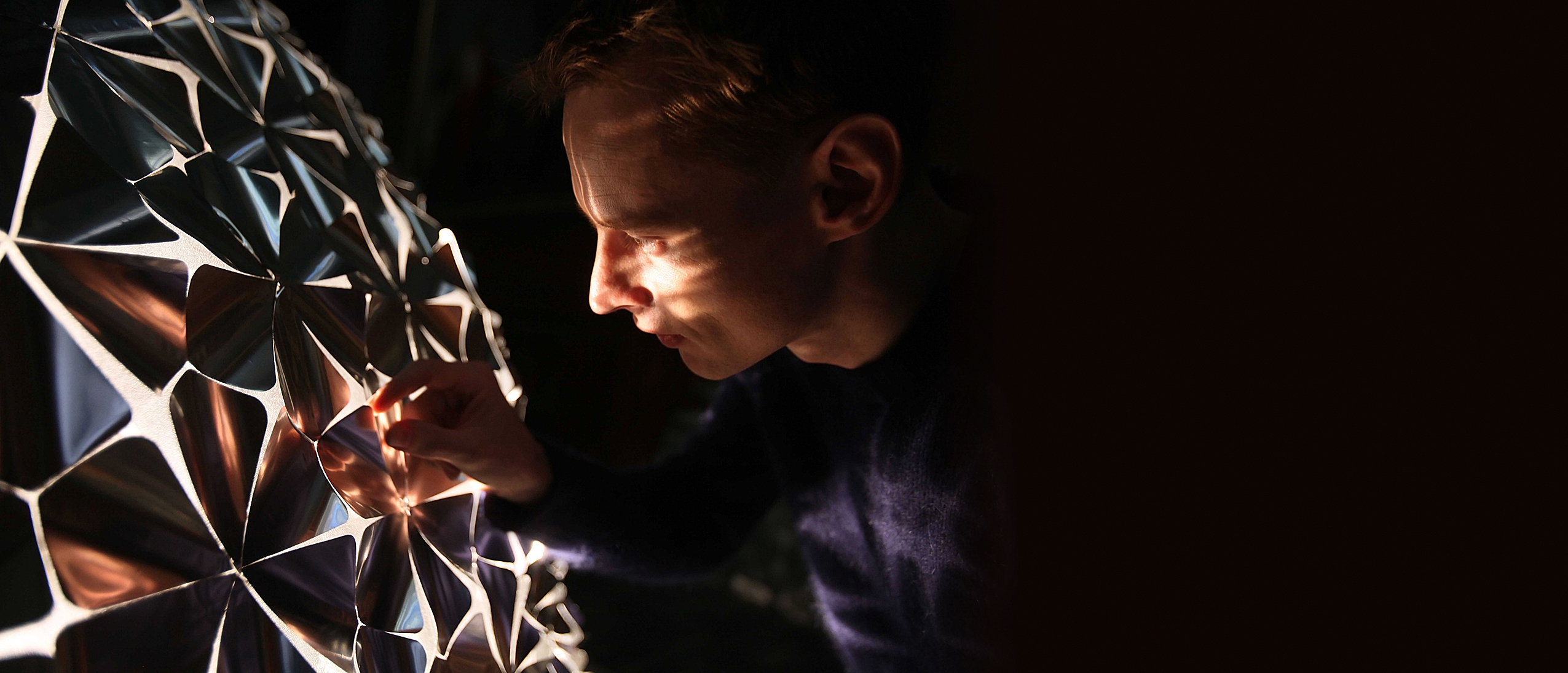
What first inspired you to become a designer?
It was as a 16-year-old visiting the Dutch Architecture Institute in Rotterdam, discovering beautiful wooden prototypes and maquettes of towers in some public square. It was the work of Arata Isozaki, who has just won the Pritzker Prize. It blew my mind and showed me that design was a job you could do. I later got to work with him on a project in Japan, and he was still so sharp. Amazing.
Do you have a dream project?
I would love to be part of forming new design standards that become the default. If you’re nice you might say some of our projects are special, and they are, but in a way they shouldn’t be. It should be normal not to have street lights burning all night when nobody is there, and to use car headlights for light instead. It should be normal that when we walk on staircases or dance in clubs it generates energy. It should be normal to have clean air for everybody. I’d like to be involved in embedding these things on a larger scale, in more places around the world, so they can really become part of people’s daily lives.
Nature is an important inspiration in your work. Has this always been the case?
I’ve always looked to nature for creativity. For example, I once found myself in Japan looking at fireflies and discovering how they use light, not as decoration but as communication. It’s this kind of Morse code they use to seduce one another! I turned on my phone flashlight, on-off-on-off, and they reacted by coming to me. I had no idea what I told them – maybe something really rude! – but it was one of the most intimate interactions I’ve had with a non-human living creature in my life, and it really changed me.
Another time, I was looking at the illuminated wings of a butterfly, and realising that that effect doesn’t come from some kind of toxic pigment, but from reflection. Wow! Two weeks later, I was looking at the headlights of cars, thinking, ‘We can use that light in the same way!’
How do you strike the right balance between the physical and the technological?
It’s so important to create physical experiences where people come together and have a collective moment that triggers them to be curious. I want to make places with no download button!
It’s really weird that we’re spending so much time behind computer screens. We’ve become robots ourselves. We give our hopes, dreams, desires and money to computers, and what do we get back? A like. That’s a bad deal right there.
Technology is great when our machines are helping us to be more human. When they’re a buddy keeping us safe, informing us, surprising us, taking care of us. But we’re better than them at creativity. Robots are really bad at it. They don’t have the desire to try, to fail, to learn. Everything else they can do way better than you or I!
What is behind the Dutch pragmatism that you describe?
We live below sea level and that’s very interesting, because we’ve used design and technology to fight water and live with water for more than 1,000 years. My studio should have 4m of water above it.
People see that and think the Dutch are crazy, that it’s super dangerous and we should move to Germany to higher ground!
We use design and creative thinking to create our own home, so in a way, innovation is in the DNA of our landscape. Design is a natural extension of what we do. That’s why the Dutch always pop up on international design juries!
Where do you most like to work?
I like working everywhere, but the Middle East and China is where the growth and curiosity is, and these are the places where I’m allowed to make a mistake. In Europe, if you want to try an idea, you’re asked if you’ve done it before; to reduce the risk and prove it can be done. In other places, you get asked, ‘Are you sure this is the first time?’ Of course that’s not true of everyone: I’m generalising a bit. Really, I want to go to places where people are curious.
What inspires you, apart from design?
It took me a while to work out what works for me. Not golf, not hockey, not cars. I don’t care about all that bullshit! I eventually found that I love to go diving at night.
Diving in the dark is like being in a Steven Spielberg movie. As a designer, I like control and I always have the final edit. In this otherworld where I’m a visitor, I don’t have control and I have to let go.
It’s fascinating, powerful and fragile at the same time.
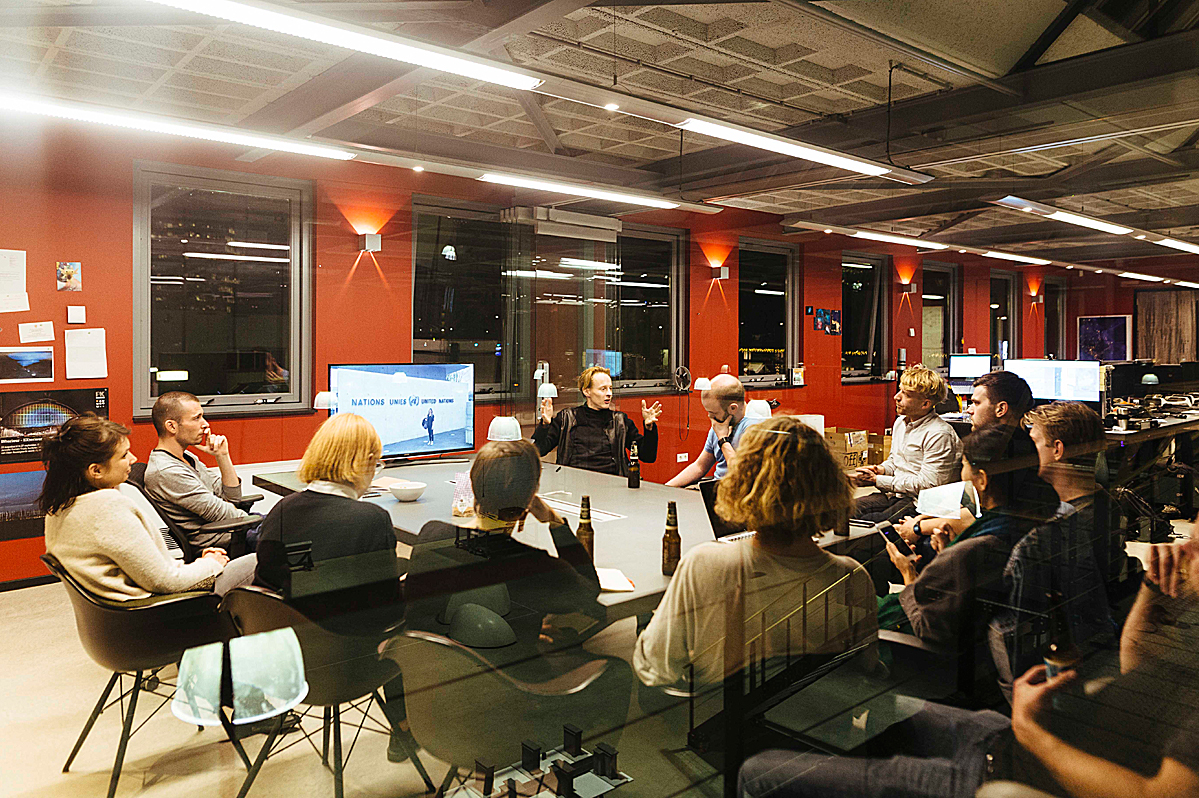
These smart kites – dedicated to the late Dutch astronaut Wubbo Ockels – are connected to a ground station by green light-emitting cables. The push and pull of the cable in the wind transforms movement into electricity, like the dynamo of a bicycle, and can supply energy for up to 200 households.
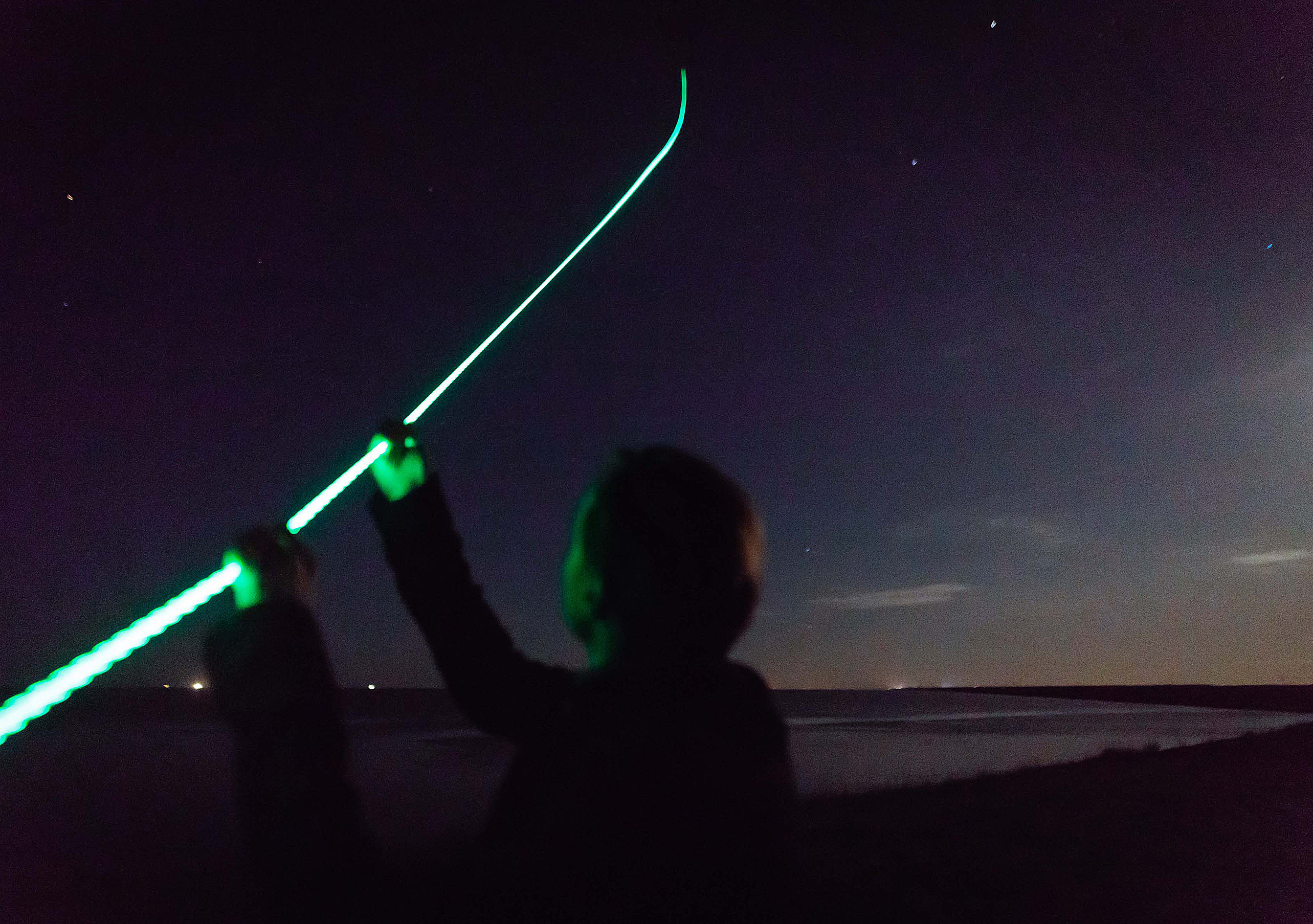
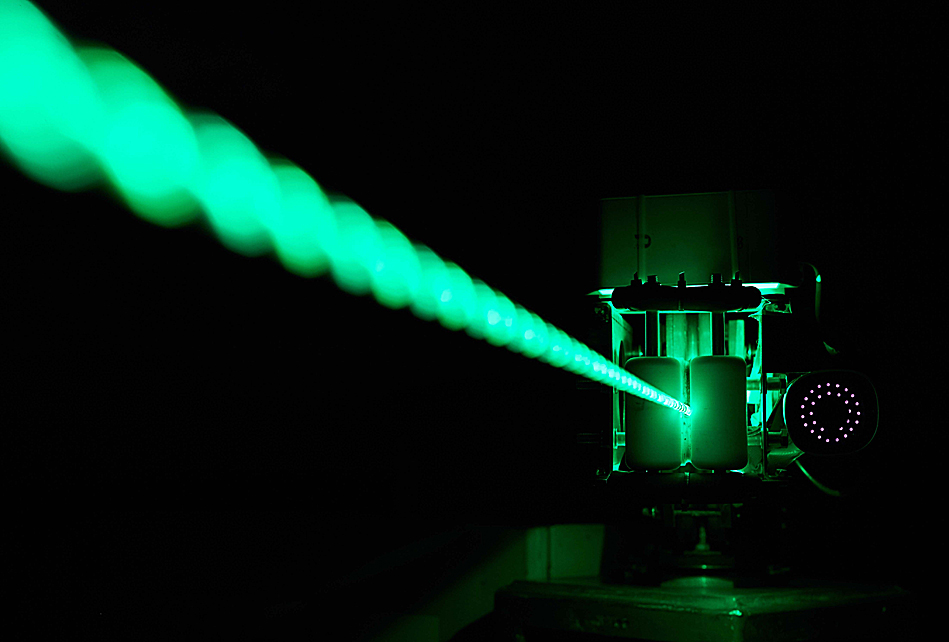
Billed as the world’s first smog vacuum cleaner, this 7m-tall structure uses positive ionisation technology to produce smog free air. Designed to be placed in public areas and parks, it cleans 30,000 m3 per hour and uses a small amount of green electricity. According to Roosegaarde: “True beauty is not a Louis Vuitton bag or a Ferrari, but clean air and clean energy.”
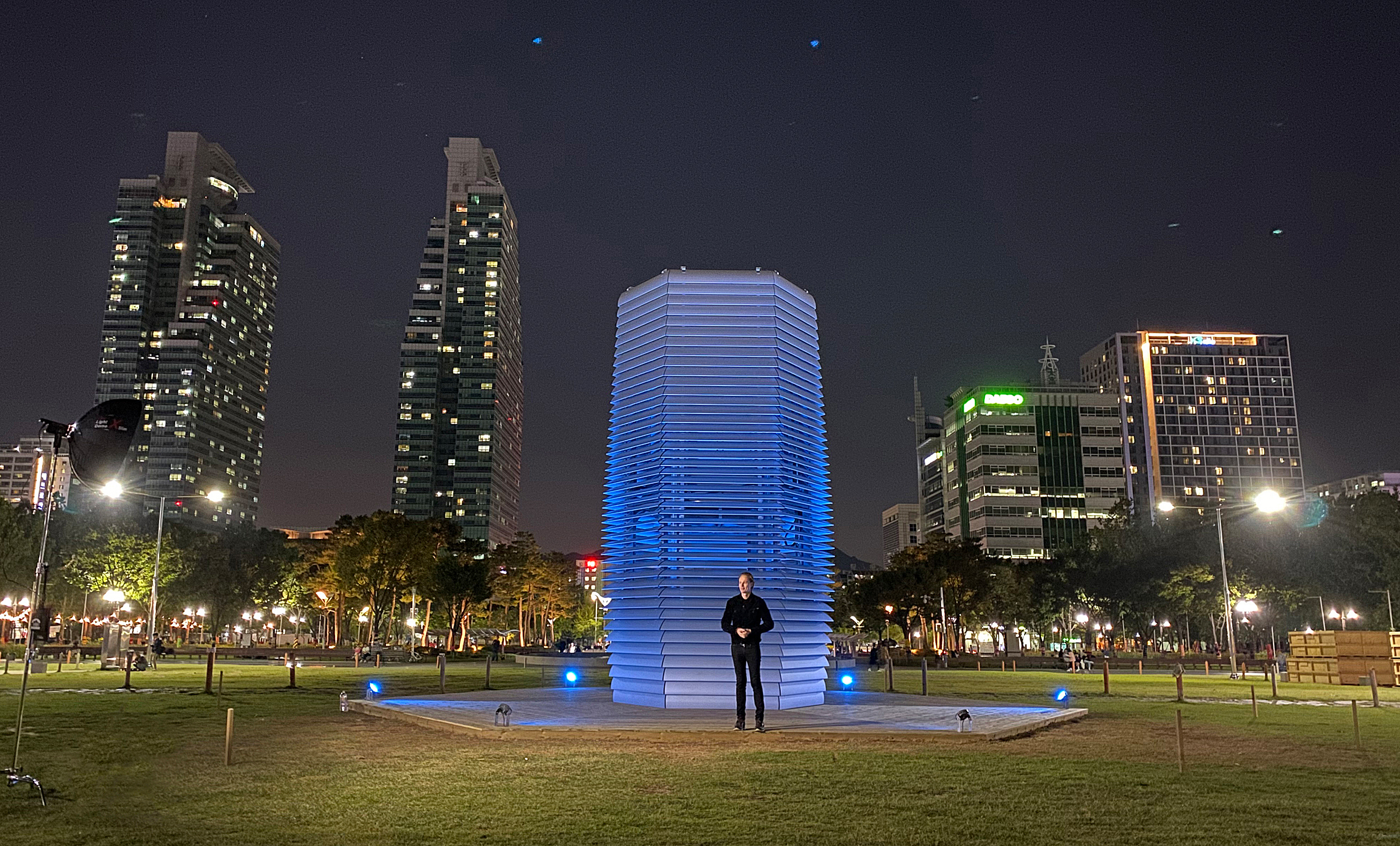
Described as “a dream landscape about the power and poetry of water,” Waterlicht is a virtual flood that shows the impact of rising water levels. A combination of LEDs and lenses create an ever-changing layer of light, influenced by wind and rain. Originally designed as a site-specific artwork in Amsterdam’s Museumplein – where it was experienced by 60,000 visitors in one night – it has since travelled to London, New York, Paris, Rotterdam, Toronto and Dubai.
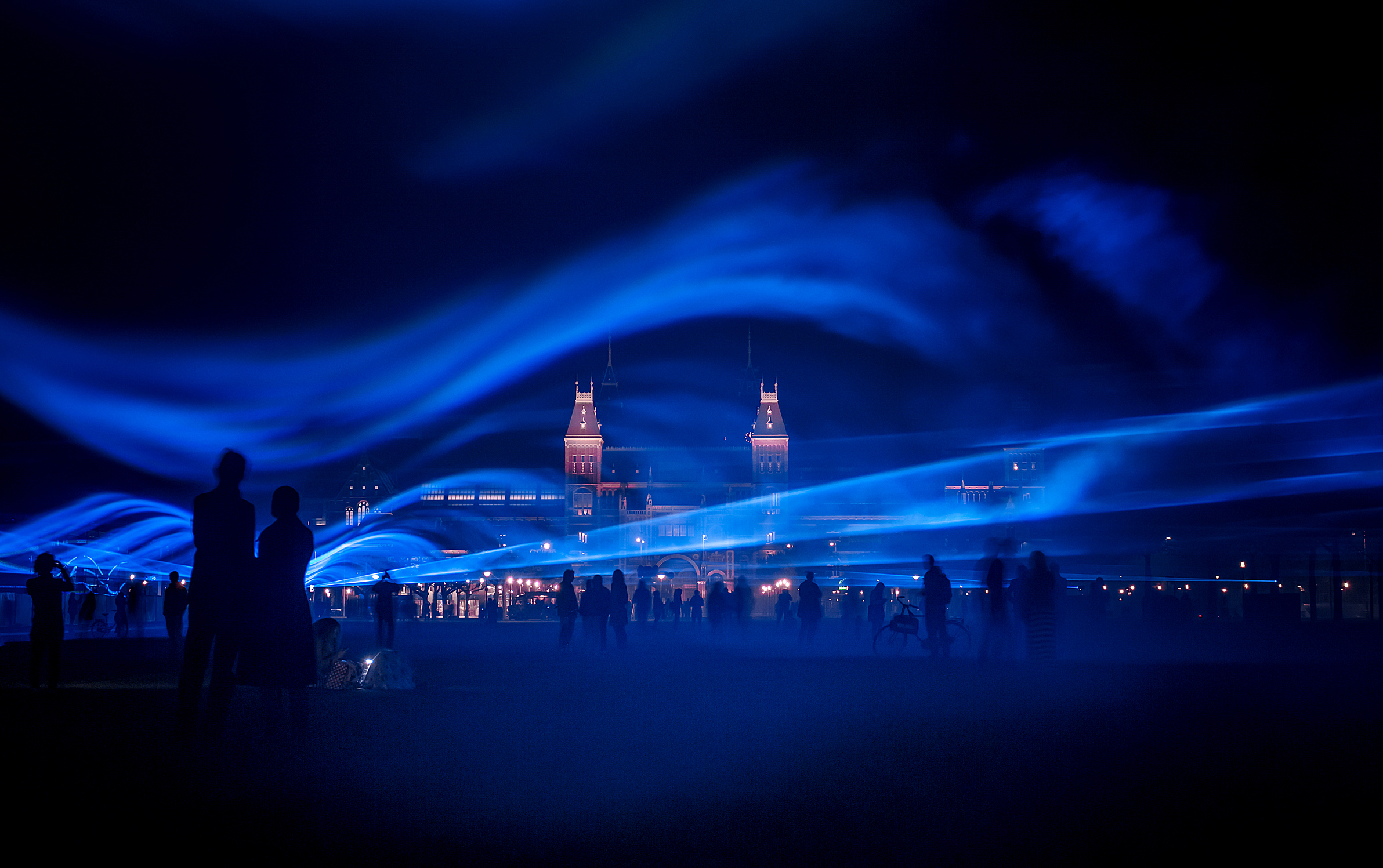
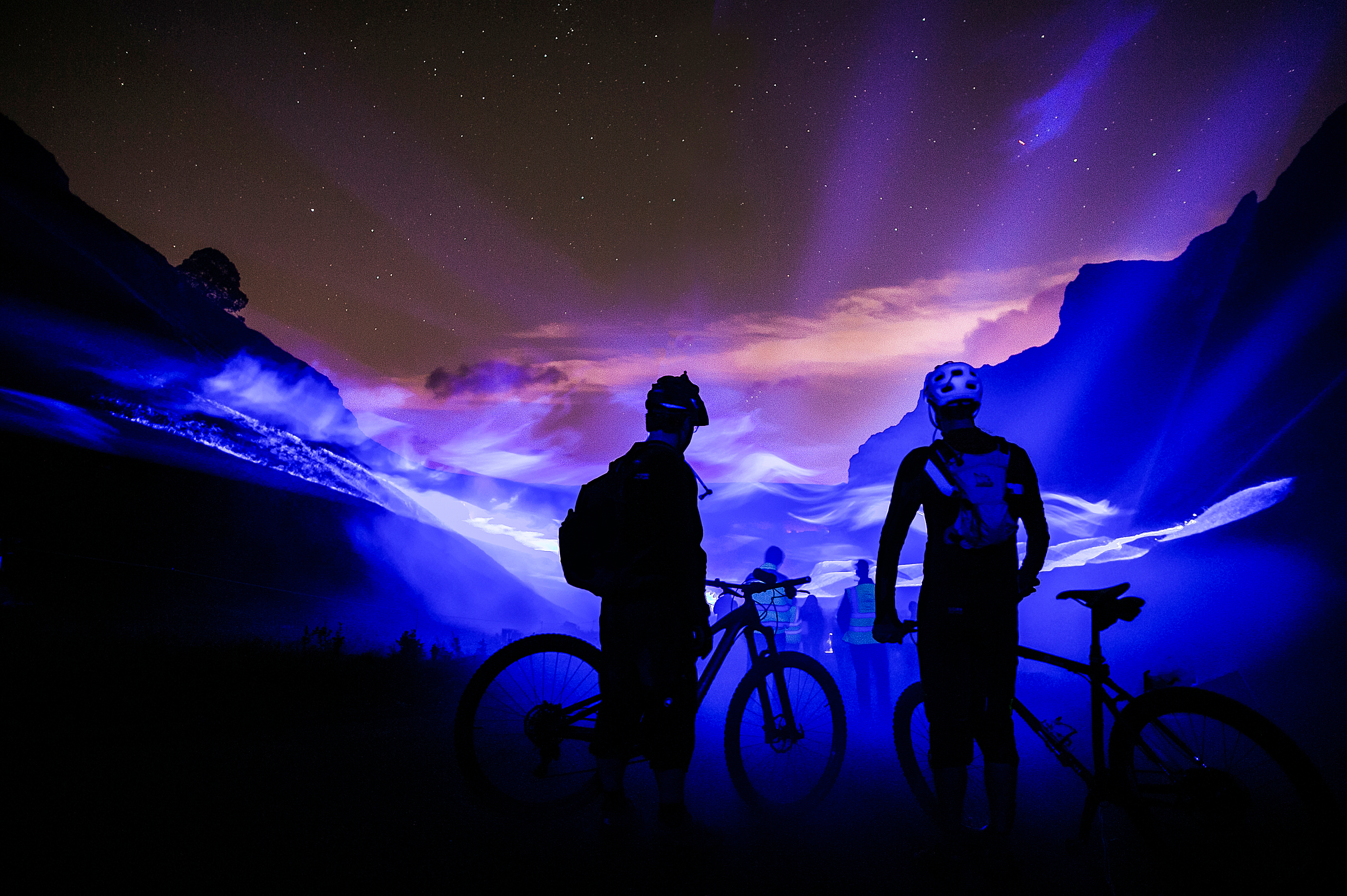
A permanent installation at the entrance to the Afsluitdijk dam and causeway, Gates of Light illuminates 60 huge 1930s floodgates through retro reflection, using the headlights of passing cars. As you drive through, the architecture forms a “futuristic landscape of light without using electricity.” If there are no cars on the road, the structures are not lit up. This way of using light requires zero energy and does not contribute to light pollution.
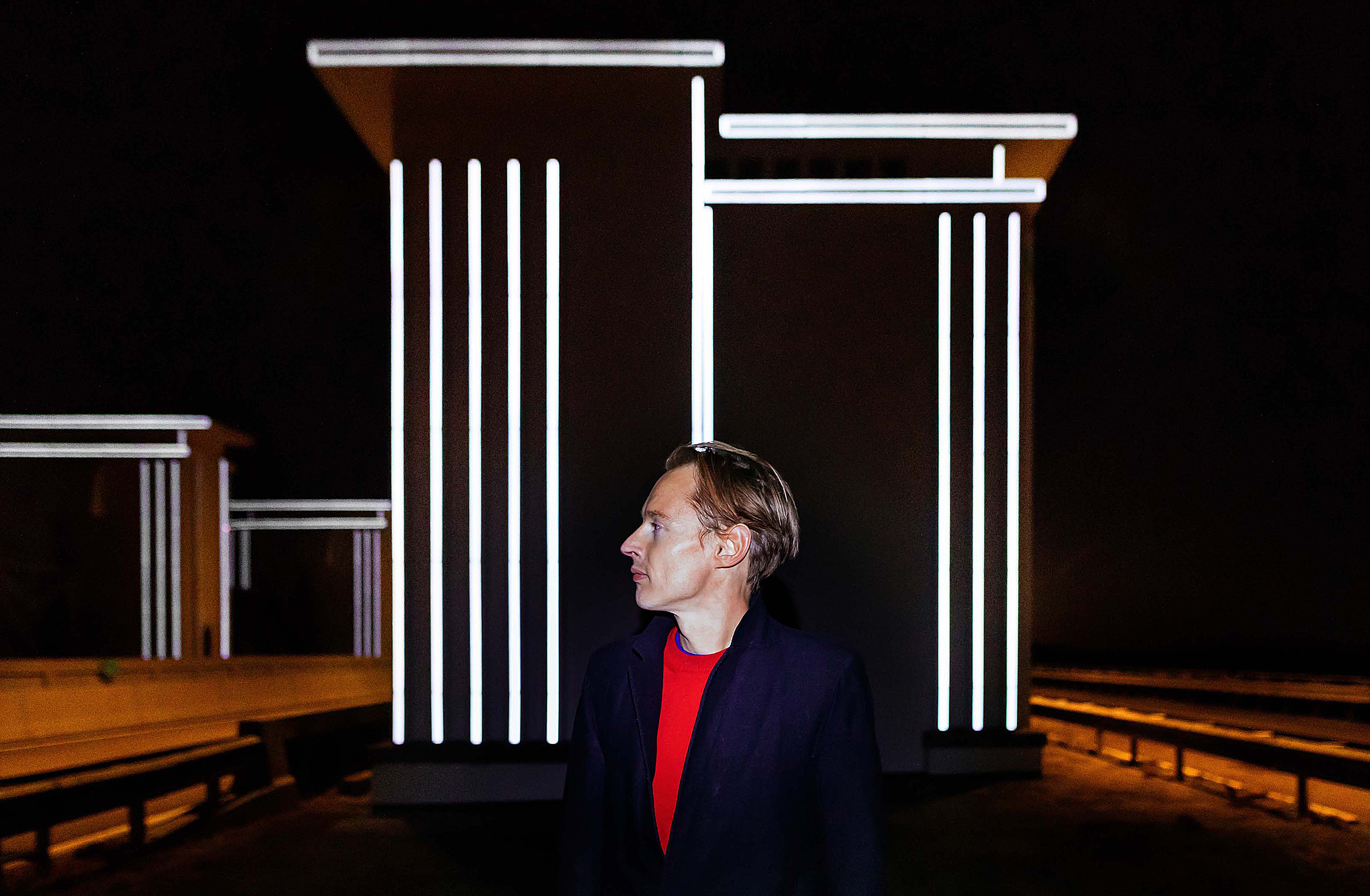
This illuminated bicycle path in the town of Nuenen is made of thousands of twinkling stones inspired by Vincent Van Gogh’s ‘Starry Night’. These are solar powered, and are charged during the day so that they glow when evening falls. Van Gogh lived in the town in the early 1880s.
